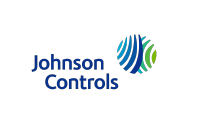Organizations succeed or fail based on their ability to effectively use people, processes and technology to develop the performance and capabilities for their organization and deliver value. Chambers & Associates and Teams Matter use systemic approaches to ensure that when one change is introduced within a system, that the other elements of the system are addressed and aligned. Furthermore, we employ solutions that are experiential and measurably contribute to change and learning.
Benefits of a Systems Approach
- Enterprise wide perspective.
- More knowledge since the right questions are being asked.
- Stakeholder involvement in the process.
- A shared understanding of the problem.
- Many perspectives considered and integrated.
- A vision beyond day to day events.
- A long term view by key decision makers.
Often leaders envision success within their team or division without considering the impact of interventions and change within the larger system within which they work. By not doing so, their desired change is not as effective as it could be. Successful leaders use a 'systems' approach to view the business or organization as a complete system in which even small activities, interventions, or changes in one part have an effect on that part and on the organization as a whole.
Using a 'systems approach' enables leaders to see the big picture and become attuned to underlying trends, patterns and consequences of actions within the larger environment. As a result, this approach helps them make sense of the interconnectedness of systems and develop solutions that are effective, long lasting and sustainable.
Systems thinking often involves moving from observing events or data, to identifying patterns of behaviour overtime, to surfacing the underlying structures that drive those events and patterns.
By understanding and changing structures that are not serving us well (including our mental models and perceptions), we can expand the choices available to us and create more satisfying, long-term solutions to problems.
Systems Thinking
Systems Thinking is one of the five disciplines of a 'learning organization' as defined by Peter Senge. Systems Thinking focuses on:
- The organization as a whole
- Interactions between parts, not the parts themselves
- The way systems affect other systems
- Reoccurring patterns rather than just individual events
- Change over time
- How feedback affects the parts
Common Organizational Example
Most performance review processes are based on achievement of objectives designed around an individual’s KPI’s (Key performance indicators). Then along comes the opportunity to place individuals in various team to achieve team goals.
Often there is lack of clarity and accountability within teams regarding goals and individual contribution. Furthermore, we often do not take the time to develop 'team goals' and to include them as part of the organization’s performance review process. Thus, where do you think employees will spend their time – more on individual KPI’s or more on team goals? The one that is getting managed and/or measured of course! (Individual KPI’s). Thus, if we want to hold individuals as accountable members of teams responsible for achieving team goals, we must also include a team measurement alongside an individual KPI assessment.
Many organizations go one step further and use a 'balanced scorecard' in which they measure individual, organizational, team and customer focus goals to encourage employees to work towards all of them!
A systems approach, commonly used in Organization Development ensure that when change happens in one part of a system, other parts are aligned with that change to ensure effective implementation.

















